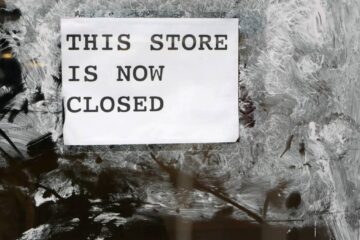Joann did not go out out business because it lacked customers. The chain has a dedicated, loyal following that has supported it through multiple bankruptcies.
The problem is that the company had debt that it simply could not handle. It explained the problem in its original bankruptcy documents.
Related: Iconic ice cream, fast-food chain closing dozens of locations
“Joann faced a severe liquidity constraint caused by an outsized capital
structure and operational cost center, subsequently impairing Joann’s ability to service its funded debt. As a result, Joann filed for chapter 11 in early 2024 to implement a prepackaged plan of reorganization and emerged from the Prior Cases in April 2024,” it shared.
Basically, the company filed its first bankruptcy because it had too much to maintain operations. That’s not a comment on its operations. It’s very possible that without that debt, the company was profitable.
In theory, that first filing made the debt more manageable and allowed the company to operate. That’s not actually what happened.
💰💸 Don’t miss the move: SIGN UP for TheStreet’s FREE Daily newsletter 💰💸
“Upon emergence, Joann immediately turned to implementing its post-emergence business plan, but post-emergence challenges, including the prolonged impact of a sluggish retail economy, put Joann back into an untenable debt position. Accordingly, Joann commenced a marketing process to attract bids for the sale of some or all of the debtors’ business as a going-concern or of some or all of the debtors’ assets,” it continued.
Joann has survived a previous bankruptcy.
Image source: Getty Images.
Here’s where Joann stands now
Essentially, Joann’s first bankruptcy was an attempt to negotiate with vendors and creditors for more breathing room. When that proved to not be enough, its second filing was an effort to sell off the brand in the best way possible.
That did not guarantee that it would close — a buyer could step in to take over the brand and some (or even all) of its stores. If that did not happen, however, the assets would be sold off to bring the largest return possible for creditors.
In a Jan. 15 filing, the company shared that it has successfully negotiated a stalking horse agreement with Gordon Brothers Retail Partners for the right to liquidate substantially all of the debtors.
More Retail:
Walmart, Target, Costco make major 2025 announcementFormerly bankrupt retailer makes painful decision to close more storesTop investor takes firm stance on troubled retail brand
That kicked off the going-out-of-business sale process but it did not preclude a buyer from stepping in. It’s also possible for the shutdown process to reach the end and for a buyer to purchase the name in order to reopen stores or bring the brand back as a digital-only brand.
Joann has filed a new court document sharing what will happen next in its bankruptcy process.
Joann has a plan shoppers won’t like
Joann has asked the court to approve a liquidation plan that would wind down the 80-year-old crafting retailer’s operations. The chain has also filed a plan that shows how it intends to distribute proceeds from ongoing store liquidations to creditors after failing to stabilize its business following its previous bankruptcy emergence.
The disclosure statement outlines projected recoveries for different creditor classes:
Secured Creditors and Priority Claims: Expected to receive 100% recoveryPrepetition Term Loan Claims (Class 3): Recovery percentage not specified but will share in proceeds up to allowed claim amountGeneral Unsecured Claims (Class 4): Expected to receive only 0-1% recoveryShareholders (Class 7): Will receive nothing as their interests are cancelled
Basically, the chain is closing down and only secured creditors are getting paid. Shareholders, as is almost always the case in these filings will end up with nothing.
Related: After bankruptcy, mall anchor begins going-out-of-business sales


